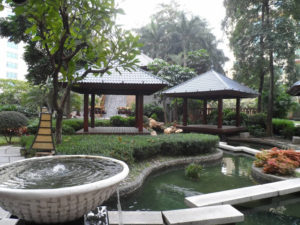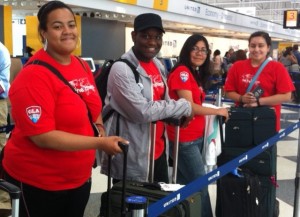Chinese, Africa’s New Language
 As China’s investments in Africa grow, so has interest in the Chinese language across the continent. In Zimbabwe, learning Chinese has become a lucrative investment.
As China’s investments in Africa grow, so has interest in the Chinese language across the continent. In Zimbabwe, learning Chinese has become a lucrative investment.
Ni hao , Chinese for “hello,” or ting bu dong, meaning “I hear you, but I don’t understand,” are two expressions one often overhears today in Zimbabwe’s capital.
It is one of the results of tenacious efforts by governments, private companies and individuals across Africa, but in Zimbabwe particularly, to learn the Chinese language and understand China’s culture.
Learning Chinese as a second or third language has been a global trend in the last few years. In Africa, the rapid increase of Chinese investments and trade (China is currently the continent’s biggest trading partner) has spurred the trend.
We want to see Zimbabwean students get jobs in China
Zimbabwe’s government has been very deliberate in enhancing its bilateral relationship with China. It launched the Look East Policy in 2003 to give priority to investors from China, Japan, Singapore and other countries from that region.
As a result, trade between China and Zimbabwe has been growing exponentially ― China is now the biggest buyer of Zimbabwe’s tobacco.
Although learning Chinese dates back to Zimbabwe’s liberation struggle in the late 1960s and 1970s when freedom fighters went to China for military training, the trend has now accelerated significantly, and for different reasons.
Confucius Institute
To spread the Chinese language and culture, the government of China is making use of a concept called Confucianism.
Confucius was a great Chinese philosopher and educator born in 551 BC.
The Chinese believe that his thoughts have tremendously influenced Chinese culture and even had an impact other cultures.
Chinese people refer to Confucius as “a greater teacher.”
Zimbabwe leads the rest of the continent in the training of local teachers of Chinese, having integrated the Confucius Institute into the University of Zimbabwe’s academic structures in 2007, as part of an expanding network of about 400 Confucius Institutes worldwide.
The programme has largely been successful, and the university is poised to export surplus teachers of Chinese to other countries as well.
Professor Pedzisai Mashiri, the inaugural director of the Confucius Institute at the University of Zimbabwe, says that one of the institute’s goals is to promote the Chinese language and culture in Zimbabwe.
Because the government is yet to integrate Chinese into the national curriculum for primary and secondary schools, schools that host Confucius classes offer the Chinese language as an extra-curricular activity.
More than a thousand students have received such language training through the institute since 2009. A few others are completing studies in China and will join the university soon.
A skill that pays
Observers say there has been a rising demand from organizations and individuals seeking to learn Chinese.
Clarence Makoni, the founder of the Cendel Language Bridge, a private company that provides translations, interpretation and foreign language instruction, told UN Nation’s Africa Renewal Magazine that there are huge benefits in learning foreign languages.
Chinese, he says, is by far the most sought after.








